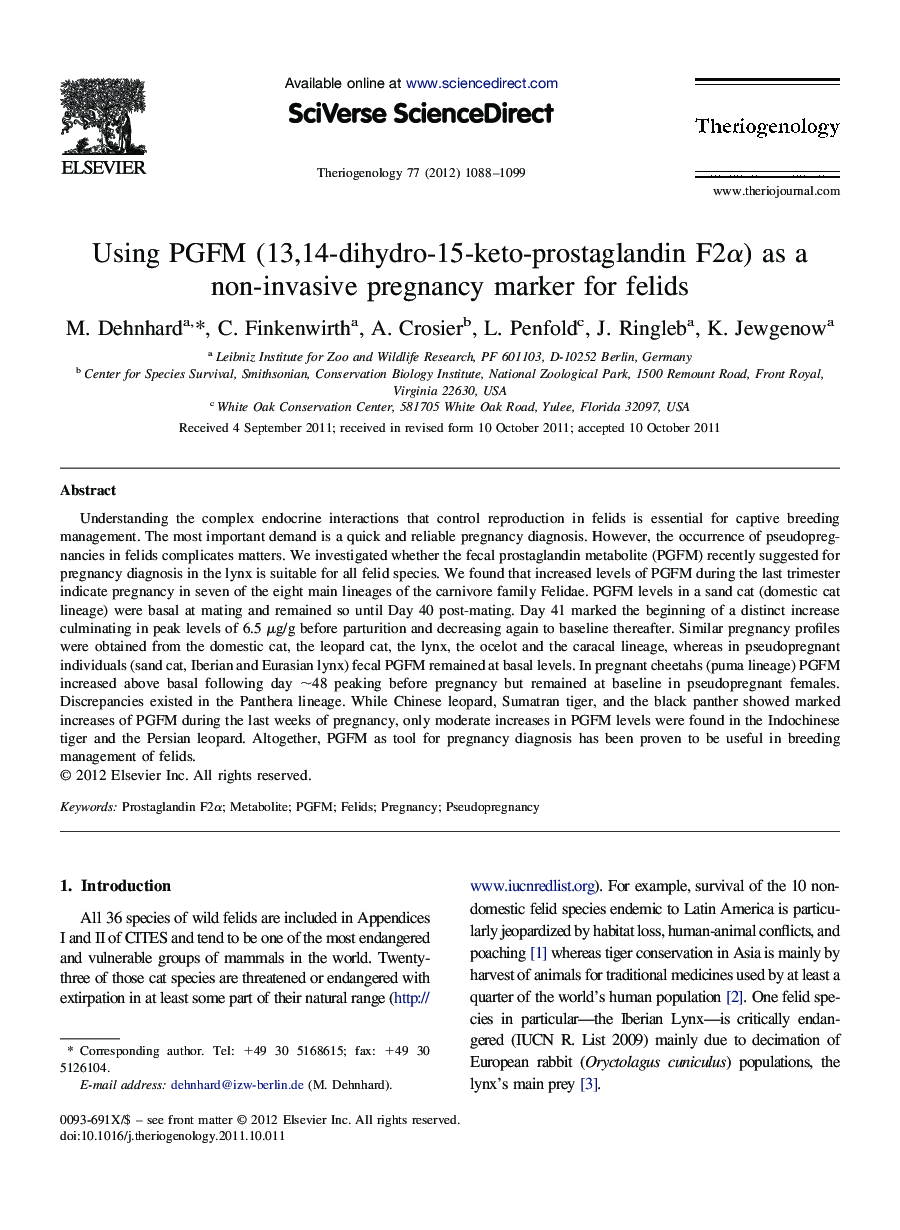| Article ID | Journal | Published Year | Pages | File Type |
|---|---|---|---|---|
| 2095574 | Theriogenology | 2012 | 12 Pages |
Understanding the complex endocrine interactions that control reproduction in felids is essential for captive breeding management. The most important demand is a quick and reliable pregnancy diagnosis. However, the occurrence of pseudopregnancies in felids complicates matters. We investigated whether the fecal prostaglandin metabolite (PGFM) recently suggested for pregnancy diagnosis in the lynx is suitable for all felid species. We found that increased levels of PGFM during the last trimester indicate pregnancy in seven of the eight main lineages of the carnivore family Felidae. PGFM levels in a sand cat (domestic cat lineage) were basal at mating and remained so until Day 40 post-mating. Day 41 marked the beginning of a distinct increase culminating in peak levels of 6.5 μg/g before parturition and decreasing again to baseline thereafter. Similar pregnancy profiles were obtained from the domestic cat, the leopard cat, the lynx, the ocelot and the caracal lineage, whereas in pseudopregnant individuals (sand cat, Iberian and Eurasian lynx) fecal PGFM remained at basal levels. In pregnant cheetahs (puma lineage) PGFM increased above basal following day ∼48 peaking before pregnancy but remained at baseline in pseudopregnant females. Discrepancies existed in the Panthera lineage. While Chinese leopard, Sumatran tiger, and the black panther showed marked increases of PGFM during the last weeks of pregnancy, only moderate increases in PGFM levels were found in the Indochinese tiger and the Persian leopard. Altogether, PGFM as tool for pregnancy diagnosis has been proven to be useful in breeding management of felids.
